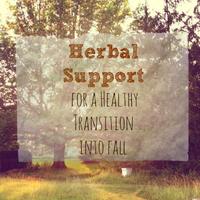I taught a class on herbal first-aid recently and we went over a variety of home remedies for simple concerns that arise with more time outside when the weather is nice — bites, stings, rashes, cuts, etc.
 One of the topics was bee/wasp/hornet stings. Ouch! It was interesting to hear all of the ways that people manage this at home.
One of the topics was bee/wasp/hornet stings. Ouch! It was interesting to hear all of the ways that people manage this at home.
My favorite is very simple and we’ve used it three times in the past year!
Before applying anything, try to remove the stinger. Use tweezers or even scrape a credit card along the skin to dislodge it. This will go a long way in preventing the area from continuing to be painful and irritated.
Then, make a thick paste with equal parts baking soda and clay to neutralize the area and remove toxins that cause the sting. Seriously, that’s it!
Get a tablespoon or so of both baking soda and clay (I use kaolin), add enough water to form a paste, and apply this to the bite. Allow to dry and just let it sit there for as long as necessary. You can reapply every 30 minutes or so to keep soothing the area. Also, I often add a drop or two of tea tree or lavender essential oil to the paste to further help relieve the sting and calm the area.
I have a few packets of the mix leftover if you’re looking to have some on hand!
 You can also buy your own baking soda and kaolin clay. I recommend using Mountain Rose Herbs, especially because they have aluminum-free baking soda!
You can also buy your own baking soda and kaolin clay. I recommend using Mountain Rose Herbs, especially because they have aluminum-free baking soda!
And, another trick for stings if you’re away from home – grab a leaf of the common weed Plantain (Plantago major), crush it up in your hands (or even chew it!) to release the juices and stick this wad of goopy plant material right on your sting. It will help to relieve the sting quickly and also helps to draw out toxins. In fact, it’s a good plant to know for any bug bites you get while outdoors (you should see me while camping, I have tend to have little wads of plantain all over!).
 What’s your favorite way to deal with stings naturally?
What’s your favorite way to deal with stings naturally?



We also use plantain, it always seems to be handy when we need it, either hiking in the woods or working in the garden, nature’s apothecary! I keep up with what you are doing with your homestead, you are doing incredible things!
Hi Rob,
Happy to hear you’re another plantain lover! What an incredible “weed”!
I’m also happy to know that you’ve been following along with the development of our homestead! It’s been an amazing year and I am so pleased with how far we’ve come, but there is still so much ahead!!
I hope you are well and I think of you often as I enjoy the fruits of the seeds you sent months ago. Thanks again! You are a wonderful friend!
Plantain is my #1 herb for stings. I have it everywhere in my yard, the parks and woods are full, it is the greatest free pharmacy. I also solar infuse fresh spring leaves in olive oil for a good 6 weeks, strain and keep. That way, I always have some handy if I’m not outside. My daughter asks for it on her mosquito bites before bed.
Yes, Yanic! It is such an amazing freely available herb. It’s literally everywhere! I’m so glad you infuse it in oil, too – what a treat for your daughter’s bug bites! We make it into a salve for the same purpose. I love sharing nature’s pharmacy with our children in this way. They are starting off with such an incredible foundation of plant knowledge – just think of how much they’ll know when they’re our age!